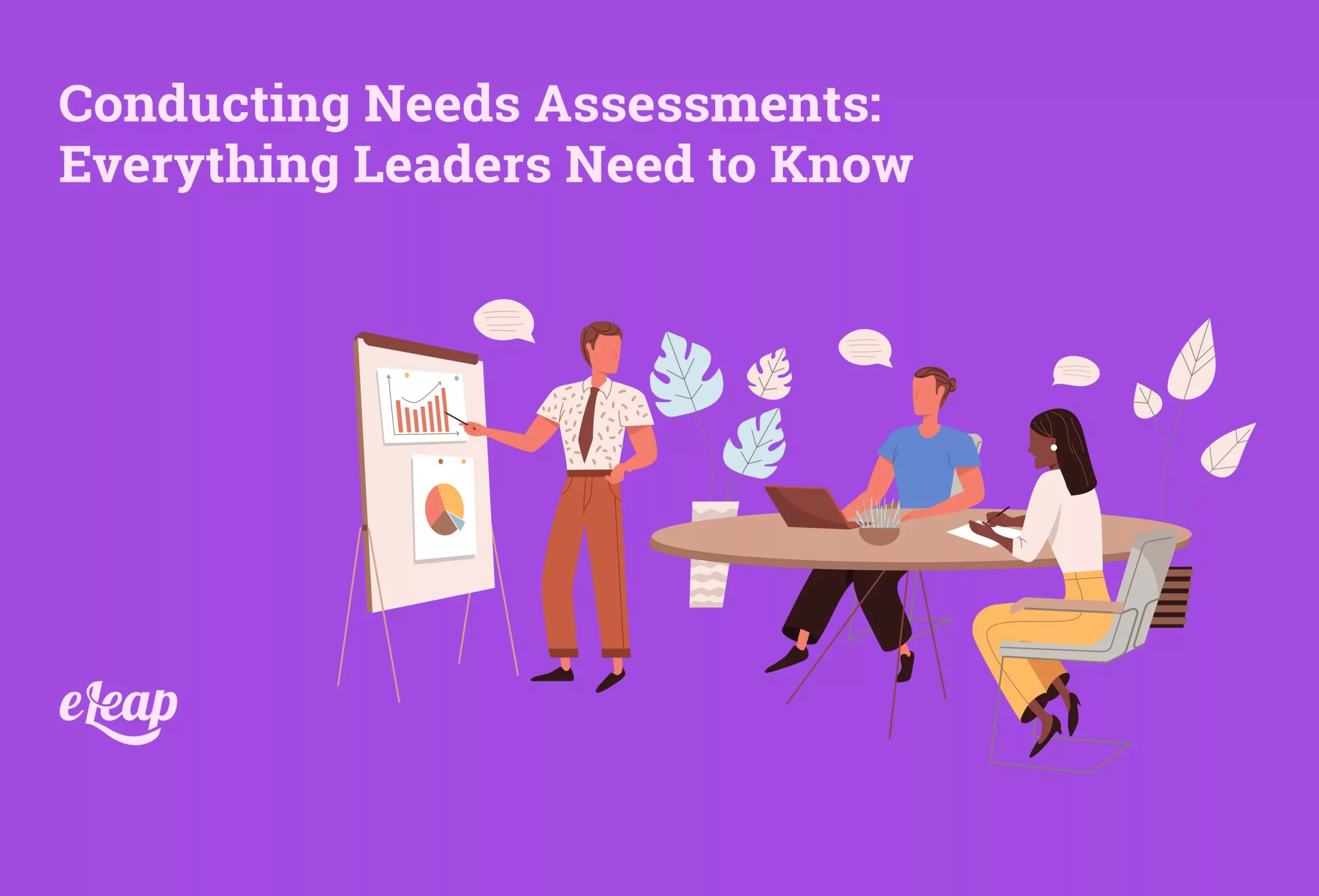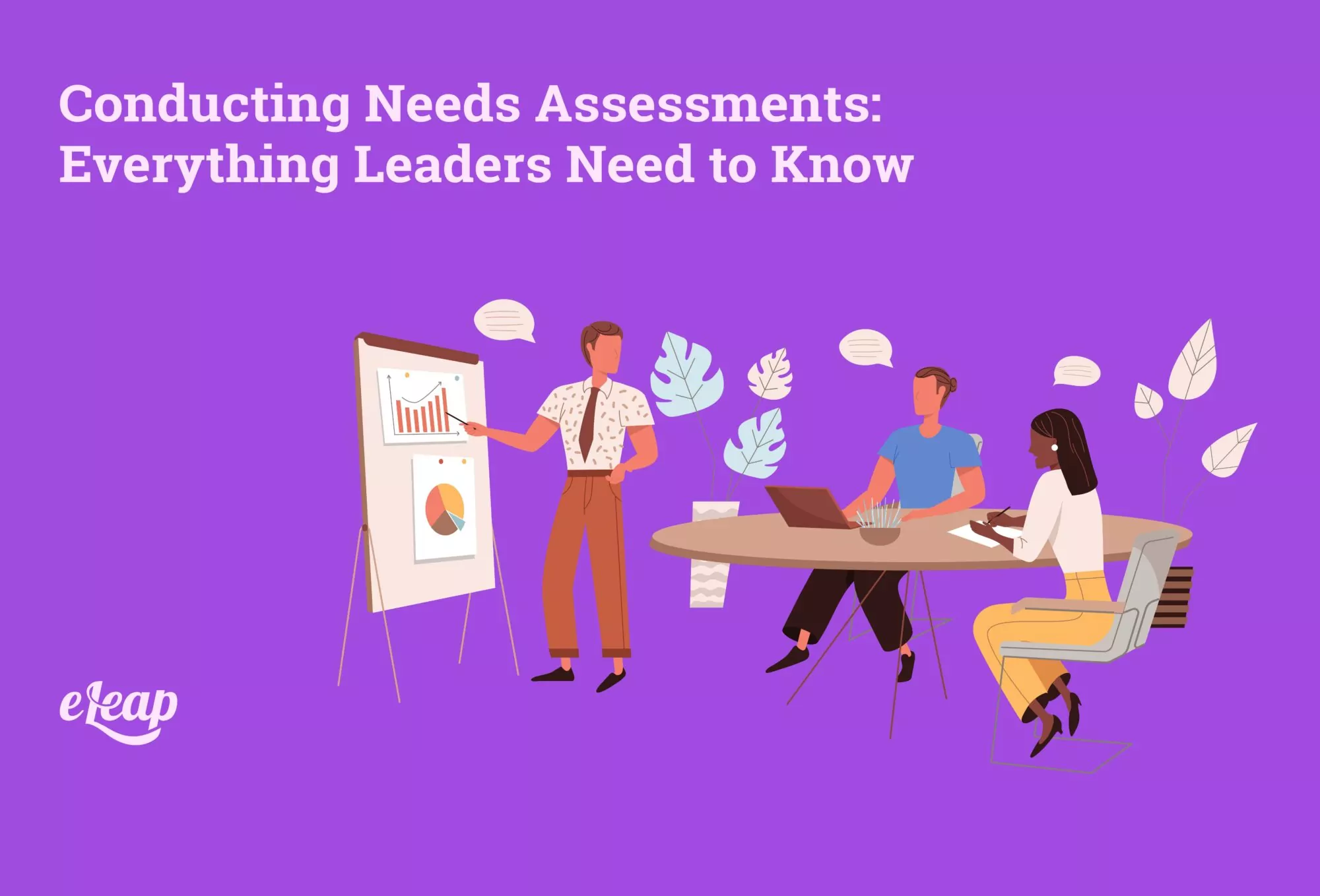Conducting Needs Assessments: Everything Leaders Need to Know

Performance management is critical to developing a skilled team capable of moving your organization forward. However, where is that, exactly? Where do you want to go? Where is it in relation to where you are now? Explore how eLeaP’s Performance Management Platform can simplify evaluations, boost productivity, and drive measurable results.

A needs assessment can provide you with information that details the gap between where you want to be and your current condition or location. Based on that assessment, you can invest in new training for team members and provide greater value during your check-ins and one-on-ones. Of course, conducting a needs assessment is no easy task, or everyone would be knocking it out of the park every time. In this post, we will explore the steps you must take to conduct a needs assessment.
Gather Information
The first thing you’ll need is information – hard data about the organization. However, resist the urge to source this information from solely internal sources. You need an internal view and an external view to ensure accuracy and objectivity. Otherwise, internal biases will affect information quality and skew your assessment.
Learn Your Needs
With a better picture of how your organization currently exists, now it’s time to identify your needs. These can take several different forms, as well. For instance, you might want to capitalize on an opportunity, such as launching a new product to fill a gap in the market. You might want to enter a new market with fewer (or no) competitors.
You may also find that your organization has problems that must be solved. This could be related to employee performance, behavior, culture, and more. For instance, are employees continually absent? Is that because they do not find the work rewarding or is it more to do with culture or deeper problems within your organization? You may face a problem with waste, with increasing customer dissatisfaction and complaints, a reduction in work or product quality, and so much more.
Finally, you may need a strategy to help achieve a specific goal. For instance, if you are launching a new product, you’ll need a marketing strategy to build awareness and drive customers through the funnel. If you’re debuting a new service, you’ll have similar needs. It could be related to building the right image of your organization within the surrounding community, or with a specific demographic group.
Learner Needs, Learning Hurdles, and Performance Requirements
To address the needs identified in the previous step, you’ll need to dig deeper. What are your team’s existing skills and competencies? What’s missing that would help you move closer to your goals? What needs to change in terms of job performance? Understand that you will likely have needs that can be met through training and needs that can be met through coaching, counseling, and non-training-related methods.
Get the Big Picture
By this point, you should have a lot of information. However, chances are good that it’s fragmented and disjointed. You must start putting the pieces together to see the bigger picture. Think of this like putting together a puzzle. Individually, each piece shows a tiny fragment of the larger image, but when they are all put together, you reveal something much more than the sum of its parts. The same is true for your organization’s information.
Coaching and Training Solutions
As the bigger picture comes together, you will need to start identifying coaching and training solutions that help close skills gaps, improve employee performance, and move your organization forward. Note that these can apply to managers as well as to non-managerial positions. For instance, managers may require training in coaching, handling one-on-ones effectively, and how to conduct a check-in properly.
Codify and Report
With the training and coaching solutions identified and the organization’s needs mapped out, it’s time to put everything into writing. This can take many different forms. For instance, reports can highlight key data while presentations can highlight how various training and coaching solutions can move the organization toward the identified goals or answer needs. Note that your presentations and reports should also highlight key findings that don’t relate to training or coaching. This can be things like shortcomings in terms of company culture, factors that sap morale, or elements that lead to a disengaged workforce and how they can be corrected.
Get Started
Now comes the hard part – the point where the rubber meets the road, so to speak. It’s time to put everything into action. Doing this successfully is going to take time, effort, and strategy. It’s also going to need buy-in from the C-suite and support from managers at every level of the organization. That’s particularly true with culture-related issues. Remember, culture is created from the top down and if managers are unwilling to address cultural issues and embrace diversity, equity, and inclusion, team members will not, either.
Quick Tips
If you’ve never conducted a needs assessment before, a few quick tips can help ensure your success.
- Don’t Rinse and Repeat: There’s often an idea that what has worked previously will continue to do so. Never assume that. Sometimes, change requires new ways of doing things.
- Go for the Ideal: Why settle for “good enough”? Let an ideal vision of what you want to achieve be your guide. Welcome incremental progress, but be committed to achieving greatness.
- Know Where You’re Going: You should focus first on your ends – where you’re going – and only later on how you’ll get there. After all, if you don’t know where you want to go, then it doesn’t really matter how you move forward.
- Have the Right Technology: Without access to a modern learning management system, your training efforts will be limited, to say the least. Make sure you have the right tech to support your vision.
There you have it – a high-level overview of how to conduct a needs assessment. The specifics will vary from organization to organization, but the basic steps will always remain the same. With time, patience, and the willingness to make decisions based on accurate information, it’s possible to achieve great things.